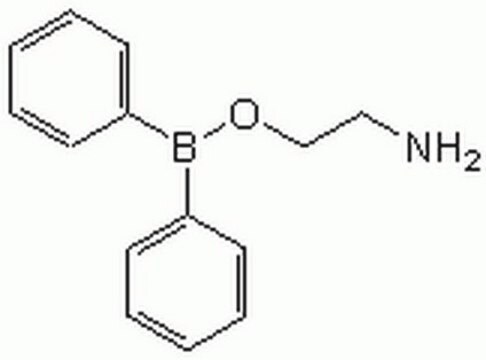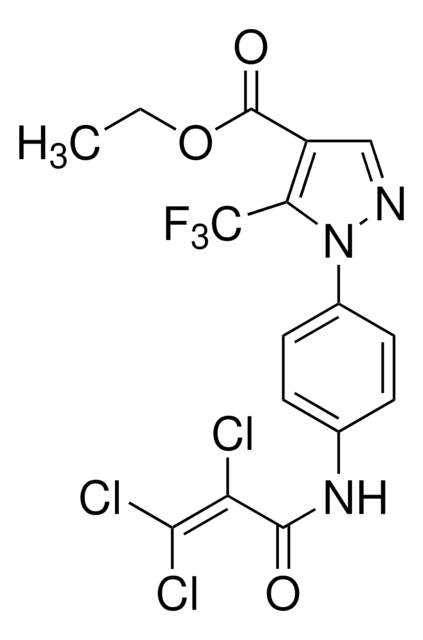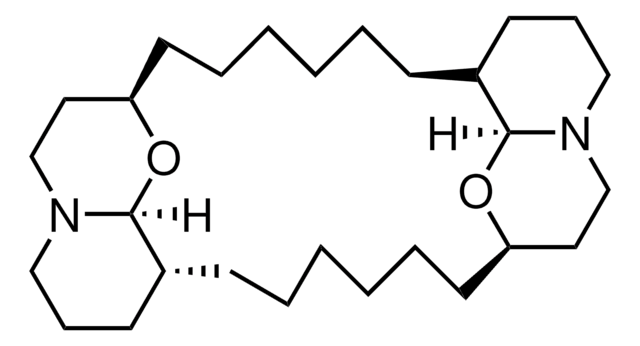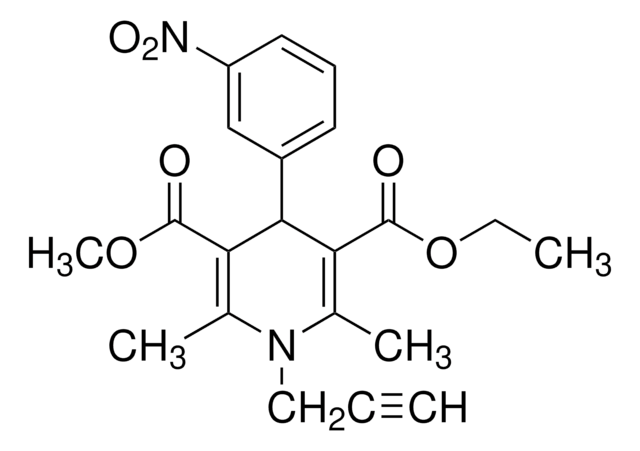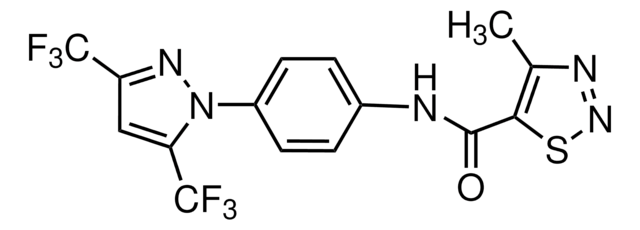SML1949
Synta66
≥98% (HPLC)
Synonim(y):
4-Pyridinecarboxamide, N-(2′,5′-dimethoxy[1,1′-biphenyl]-4-yl)-3-fluoro-, GSK1349571A, N-(2′,5′-Dimethoxy[1,1′-biphenyl]-4-yl)-3-fluoro-4-pyridinecarboxamide, S66, Synta 66, Synta-66
About This Item
Polecane produkty
Poziom jakości
Próba
≥98% (HPLC)
Postać
powder
kolor
white to beige
rozpuszczalność
DMSO: 20 mg/mL, clear
temp. przechowywania
2-8°C
ciąg SMILES
O=C(NC1=CC=C(C2=C(OC)C=CC(OC)=C2)C=C1)C3=CC=NC=C3F
Zastosowanie
- as a Ca2+ release-activated calcium (CRAC) channel inhibitor to study its effects on ORAI isoforms
- as an ORAI1 blocker to study its effects on the entry of Ca2+ in chronic lymphocytic leukemia (CLL) B cells
- as a CRAC blocker to study its effects on the influx of Ca2+ by store-operated Ca2+ entry (SOCE) in enamel cells
Działania biochem./fizjol.
Kod klasy składowania
11 - Combustible Solids
Klasa zagrożenia wodnego (WGK)
WGK 3
Temperatura zapłonu (°F)
Not applicable
Temperatura zapłonu (°C)
Not applicable
Certyfikaty analizy (CoA)
Poszukaj Certyfikaty analizy (CoA), wpisując numer partii/serii produktów. Numery serii i partii można znaleźć na etykiecie produktu po słowach „seria” lub „partia”.
Masz już ten produkt?
Dokumenty związane z niedawno zakupionymi produktami zostały zamieszczone w Bibliotece dokumentów.
Nasz zespół naukowców ma doświadczenie we wszystkich obszarach badań, w tym w naukach przyrodniczych, materiałoznawstwie, syntezie chemicznej, chromatografii, analityce i wielu innych dziedzinach.
Skontaktuj się z zespołem ds. pomocy technicznej